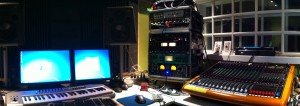Weblogs
 For my latest E-Learning Toolkit exploration I decided to discuss the creation of my computer audio blog http://www.computeraudioguy.com. Now I have to admit that I had already started this blog about a year ago but I don’t think that should stop me from reflecting on the process as I regularly update my blog with the latest info on the world of computers and music making.
For my latest E-Learning Toolkit exploration I decided to discuss the creation of my computer audio blog http://www.computeraudioguy.com. Now I have to admit that I had already started this blog about a year ago but I don’t think that should stop me from reflecting on the process as I regularly update my blog with the latest info on the world of computers and music making.
For creating my blog I decided to use WordPress. I am not sure why I chose WordPress other than to say that someone recommended it to me so I decided to give it a try. Other than a few annoying features, I find WordPress to be an easy tool to use to create a decent looking website perfect for blogging. Since I have little experience using HTML code (none to be exact :), WordPress was a good choice for me as it uses more of a WYSIWYG graphical user interface. I have had some experience using Dreamweaver in the past but I found WordPress to be a little easier to use and therefore more enjoyable.
In my opinion, what makes WordPress such a great tool is in its ease of use. Combined with signing up for webspace (in my case Go Daddy), I was able to have a basic website up and running in less than a couple of hours. Adding text, pictures, and videos from Youtube was a breeze which I believe is important in any blogging type software. Another advantage of using WordPress is that you can sign up for your own domain name instead of using a domain name provided for you. Furthermore, I also liked how easy it was to create a customized look to my WordPress page due to the access of numerous themes provided. Themes for WordPress are easy to implement and also highly customizable. Just one click of the themes button under the appearance tab and you can choose to download a number of different themes for a great look and easy customization. The other WordPress feature that I found to be incredibly advantageous was the ability to use plugins for further customization. For example, if you want your WordPress to display stats about your blog you can use a plugin to take care of this. You can also use a plugin to display the most recent comments in the sidebar of your site. Check out the numerous plugins available by clicking on the plugin tab.
For me, the most challenging aspect of using WordPress was the amount of choice of features I had at my disposal. From choosing from the hundreds of themes to adding plugins, you could find yourself working on your blog for days without getting any content uploaded. Another challenge I found with working with WordPress was with formatting. Even with this very blog, I have faced some challenges in getting the header to look a certain way and changing the font size of my buttons at the top of my page. This has led to some real frustration on my part as I have yet to find a solution. Hopefully I will be able to solve these little problems soon.
As far as surprises are concerned, I guess the biggest surprise for me was that WordPress was so easy to use. Maybe it was because my only foray into website building before WordPress was using Dreamweaver or my overall excitement getting to create my own blog. Nevertheless, even with a few WordPress criticisms, it has been a joy to use in creating a polished looking weblog. Now if only I could keep my blog up-to-date.

